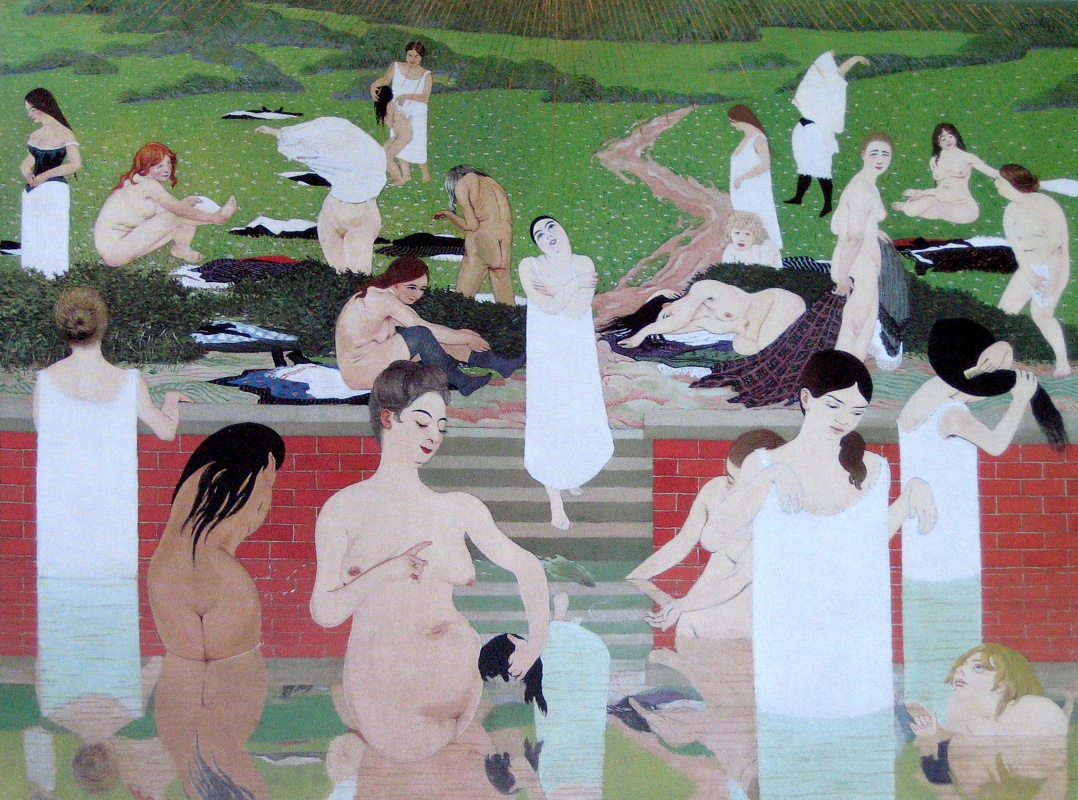log in
Enter site
Login to use Arthive functionality to the maximum
Bathing. Summer evening
Felix Vallotton • Painting, 1892, 97×131 cm
Description of the artwork «Bathing. Summer evening»
Bathing is a familiar story that somehow wandered through the entire history of art. But not performed by Vallotton. "Bathing. Summer evening" embarrassed the educated public. And not just embarrassed, but caused a flurry of indignation.
Vallotton was fond of impressionism, but he limited himself to this burden, afraid to lose touch with realism and with his favorite flatness, which became the main feature of his engravings. And it happened that such attempts to preserve their own, together with innovation, turned out for the artist not the most pleasant situations. For example, as with this picture.
It was first shown at the Salon des Indépendants in 1893 and immediately received a barrage of stinging comments. Critics felt that this was literally a caricature of such a bourgeois and exquisite story as bathing. Especially they were outraged that the bathers themselves were not nymphs or aristocrats, but simple modern women, the central of which repels them with their sly and self-satisfied face. Their hairstyles, facial expressions and figures became objects of indignation, they found obscenity and excessive eroticism.
Bathing is Vallotton's first large-scale work. It is impressive not so much its size, and the plan. On the canvas you can easily find the features of painting Cranach, Botticelliand of course Renoir. The plot inherent in the “high” art here is well seasoned with irony and the classic Nabi-style: local color, clear traced figures, flattening and general decorativeness. The rhythmic combination of women's flesh and white shirts, clear figures and their reflections in the water creates an impression of ornamentation.
The painting became the starting point in the participation of Vallotton in the exhibitions of the Nabi group. Now she is in the Museum of Fine Arts in Zurich (Kunsthaus).
Author: Lyudmila Lebedeva
Vallotton was fond of impressionism, but he limited himself to this burden, afraid to lose touch with realism and with his favorite flatness, which became the main feature of his engravings. And it happened that such attempts to preserve their own, together with innovation, turned out for the artist not the most pleasant situations. For example, as with this picture.
It was first shown at the Salon des Indépendants in 1893 and immediately received a barrage of stinging comments. Critics felt that this was literally a caricature of such a bourgeois and exquisite story as bathing. Especially they were outraged that the bathers themselves were not nymphs or aristocrats, but simple modern women, the central of which repels them with their sly and self-satisfied face. Their hairstyles, facial expressions and figures became objects of indignation, they found obscenity and excessive eroticism.
Bathing is Vallotton's first large-scale work. It is impressive not so much its size, and the plan. On the canvas you can easily find the features of painting Cranach, Botticelliand of course Renoir. The plot inherent in the “high” art here is well seasoned with irony and the classic Nabi-style: local color, clear traced figures, flattening and general decorativeness. The rhythmic combination of women's flesh and white shirts, clear figures and their reflections in the water creates an impression of ornamentation.
The painting became the starting point in the participation of Vallotton in the exhibitions of the Nabi group. Now she is in the Museum of Fine Arts in Zurich (Kunsthaus).
Author: Lyudmila Lebedeva


